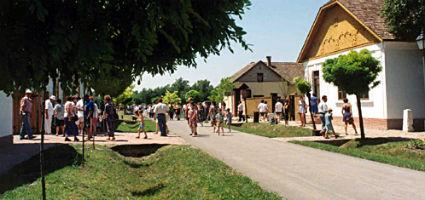2024. November 22. Friday
Ópusztaszer National Historic Memorial Park - Ópusztaszer
 |
Address: 6767, Ópusztaszer Szoborkert 68.
Phone number: (62) 275-133 /103, (62) 275-133 /104
E-mail: info@opusztaszer.hu
Opening hours: 01.04-30-10.: Tue-Sun 10-18
01.11-30.03.: Tue-Sun 10-16 (Skanzen, external exhibiton closed) The current fare for those interested informed about the institution's website: www.opusztaszer.hu |
The monastery of the Benedictines with the church attached to it was one of the most significant buildings of Hungary in the Middle Ages. The rulers of the world, the members of the Bór-Kalán clan, bare important offices at the royal court and the temple. The monastery was destroyed at the time of the Turkish expansion, but the ruins of the church still stood in the 19th century.
Benedek Göndöcs, the abbot of the monastery, initiated its first excavation in the 1880's. Its complete unearthing began in 1970 by the archeologists of the Ferenc Móra Museum of Szeged. Presently the reconstructed walls, the living quarter, and the towers at the south gate can be seen. Naturally the excavations continue.
The county town that surrounded the monastery was called Szer. We can also learn a lot by studying the results of the archeologists.
Benedek Göndöcs, the abbot of the monastery, initiated its first excavation in the 1880's. Its complete unearthing began in 1970 by the archeologists of the Ferenc Móra Museum of Szeged. Presently the reconstructed walls, the living quarter, and the towers at the south gate can be seen. Naturally the excavations continue.
The county town that surrounded the monastery was called Szer. We can also learn a lot by studying the results of the archeologists.
|
Related activities
|
|